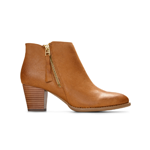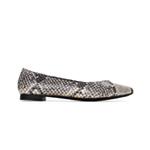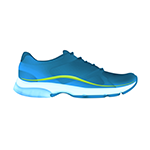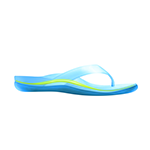TYPES OF ORTHOTICS FOR COMFORTABLE ARCH SUPPORT

Foot discomfort and heel pain are common conditions—maybe too common. In fact, nearly 40% of adults live with some type of foot condition[1]. If you suffer from hammertoes, bunions, plantar fasciitis, overpronation, Morton’s neuroma, alignment issues, or ongoing discomfort, you’re not alone. Solidarity might not make your feet feel better, but there are many promising therapies and solutions. This includes stretching, icing the affected area, physical therapy, and orthotics.
At Vionic, we’re proud to offer orthopedic footwear and orthotics for men and women. Our podiatrist-designed products are made with comfort and arch support in mind. Suffice it to say, we know orthotics. If you’ve heard about them but are still asking yourself “what is orthotics?”, we’ve got you covered. Find a detailed breakdown of the different types of orthotics below.
3 Main Types of Orthotics
When your muscles, ligaments, tendons, bones, and joints aren’t in the proper position, it can lead to substantial discomfort, pain, and overall fatigue. But thanks to orthopedic technology, it doesn’t have to be this way. There are several types of orthotics, but they fall into three main categories: over-the-counter (OTC) insoles, prescription inserts, and orthotic footwear. Here’s what you should know.
1. Over-the-Counter Orthotics

Over-the-counter orthotic insoles can be bought in stores and online from retailers like Vionic. They go into your shoe, helping to alleviate discomfort and providing contouring in footwear that lacks support. You can find insoles based on foot condition, such as heel pain or tendinitis, or activity, like running or cross-training. Though they’re widely available, not all off-the-shelf inserts are created equal.
The best types of orthotics provide some sort of cushioning, arch support, and shock absorption. Over-the-counter insoles are usually soft and flexible, which allows them to conform to most people’s feet. They can be made out of plastic, rubber, foam, or gel and come in a variety of sizes. An OTC insert can be placed on top of a shoe’s insole, or you can take the insole out and replace it with the orthotic.
OTC Shoe Inserts for Targeted Areas
You can find over-the-counter inserts that focus on only one area of the foot. For instance, you can get arch supports to support your foot’s natural arch, which can be beneficial for those with high arches or flat feet. Then there’s heel liners (sometimes called cups or pads) for heel support and cushioning. You can also get foot cushions, which you can apply to different areas of a shoe to prevent rubbing and friction. However, if you’re going the over-the-counter route, we recommend getting traditional insoles, which will offer the most comprehensive orthotic support.
2. Prescription Orthotics
Prescription orthotics (sometimes called prescription foot orthoses or functional orthotics) are prescribed by a podiatrist (foot doctor). Unlike over-the-counter products, they’re custom-made to treat various foot problems and conditions. A custom foot orthotic can be rigid, semi-rigid, or semi-flexible, but they usually aren’t soft like OTC insoles.
Before prescribing functional foot orthoses, a podiatrist will evaluate your current condition, foot type, pain and discomfort levels, health history, height, weight, and lifestyle[3]. They’ll also likely take an X-Ray to assess your bone formation.
If they determine that you can benefit from a prescription orthotic, they’ll take a mold impression of your feet to have a custom set made. Prescription orthotics will essentially be formed with the desired corrections—almost like plastic retainers for your teeth—the idea being that wearing them regularly will help you achieve that alignment.
OTC vs. Prescription Orthotic Inserts
In many instances, the average person can benefit from over-the-counter orthotic insoles. They tend to be more budget-friendly and can usually help relieve various pains and discomforts. On the other hand, some foot conditions are best addressed by a licensed professional, such as a severely flat foot or a foot deformity. You might be able to get a prescription orthotic covered by your health insurance, in which case the out-of-pocket costs might be similar or less than an OTC insert.
Rigid vs. Soft Orthotics
Generally speaking, rigid orthotics are available through prescription, and soft orthotics are available over-the-counter. A rigid or semi-rigid orthotic is firm because it was custom-made to fit the shape of your foot, whereas soft and flexible inserts can adapt to most people’s feet.
As we mentioned, there are a few different types of custom orthotics. They’re usually made out of hard plastic or graphite (carbon fiber). A rigid orthotic is typically meant to be worn in closed-toe shoes with low heels, like flats, sneakers, men’s dress shoes, or walking shoes. Conversely, a soft orthotic insert like those offered from Vionic will be made of cushiony compression materials. You can wear them with all types of footwear, including heels, athletic shoes, boots, and flats.
Functional vs. Accommodative Orthotics
Other words you’ll often hear with regard to orthotics are “functional” and “accommodative.” While it depends on the prescribing doctor, the brand, and an individual’s condition, functional orthotics tend to refer to custom-made prescription inserts. And accommodative orthotics refer to over-the-counter insoles.
A functional orthotic is usually made of a firm, rigid material and is designed to provide corrective realignment for abnormal foot function and other severe conditions. An accommodative orthotic typically accommodates (or adapts to) the foot’s current positioning.
Functional orthotics can be ideal for people with very high arches, multiple foot deformities, heel spurs, plantar fasciitis, and other chronic foot ailments. Accommodative orthoses are often more comfortable to wear, and they can be effective in relieving symptoms of some of these conditions. The orthotic insoles from Vionic are an affordable and alternative to custom-made inserts. With a flexible yet firm design, they can be notably effective in alleviating foot and ankle woes.
3. Built-In Orthotics

Now that you know about the different types of orthotic inserts, let’s discuss orthotic footwear, shoes with built-in orthotics. In many cases, a podiatrist will recommend supportive footwear before prescribing custom-made insoles. Why? In a lot of cases, the main culprit of knee, lower leg, and foot pain is ill-fitting shoes that lack support.
You can get prescription orthotic footwear, but when we talk about shoes with built-in orthotics, we mean styles you can buy in a store or online, like those from Vionic. Instead of inserting support into a shoe, the orthotics are embedded right into the sole. This is super convenient and sometimes the most comfortable option, as you don’t have to worry about inserts fitting your shoes properly. It’s definitely worth trying a pair of orthotic shoes for a month or two to see if they make a difference.
Orthotic Footwear and Inserts from Vionic
The podiatrist-designed orthotic footwear and inserts from Vionic offer the stability, cushioning, and support you crave. We take foot health seriously and engineer all our products with alignment, comfort, and arch support in mind.
Stylish Orthotic Shoes
We carry an excellent selection of stylish shoes for men and women. From heels, wedges, and sandals to dress shoes, sneakers, and boots, we have it all. And every pair features our proprietary Vio-Motion Support technology. This means each design has built-in comfy cushioning, contoured arch support, and deep heel cups for stability—all seamlessly hidden within the sole of the shoe.
Many of Vionic’s styles also carry the AMPA (American Podiatric Medical Association) Seal of Acceptance, meaning they’re reviewed to ensure safety, quality, and foot health benefits. In a peer-reviewed study, our contoured toe-post sandals were shown to be more effective at alleviating heel pain than regular flip-flops and just as effective as our best-selling inserts.
High-Quality Orthotic Insoles
Vionic carries a vast collection of the best orthotic insoles for men and women. We’ve got slim-fit, active, and relief-focused options in full or 3/4 lengths and sizes extra-small through extra-large. Our inserts provide arch support, soothing symptom relief, plush cushioning, stabilization, and shock absorption. If you’ve got a pair of trendy heels or dress shoes sitting in your closet that make your feet hurt, the right Vionic shoe insert might be just what you need.
Our selection includes lightweight insoles with medium-density EVA rubber bases and slightly firmer shock-absorbing polyurethane designs. Vionic inserts also have soft microfiber topcloths with EcoFresh for odor-control. You can count on superior comfort, ideal flexibility, optimal support, and deep heel cups for proper foot positioning.
If your feet could use some TLC, try a pair of supportive shoes or insoles from Vionic today!
Sources:
1. https://www.ncbi.nlm.nih.gov/pmc/articles/PMC6098653/
2. https://www.apma.org/orthotics
3. https://www.health.harvard.edu/blog/do-i-need-orthotics-what-kind-2018102915182










